 Java
Java javaTutorial
javaTutorial How to implement Java switch grocery shopping system with product comparison function
How to implement Java switch grocery shopping system with product comparison function
How to realize the Java switch grocery shopping system with product comparison function
With the development of the Internet and the improvement of intelligent technology, more and more people choose to shop online. Among them, the grocery shopping system has become a common shopping method. People can conveniently purchase ingredients and daily necessities through the grocery shopping system. However, with the increase in product types and market competition, users need to make comparisons when choosing products to obtain the optimal shopping experience and price. Therefore, implementing the product comparison function is very important for a grocery shopping system.
This article will introduce how to use Java to develop a grocery shopping system with product comparison function.
1. Requirements analysis
Before starting the development of the system, a needs analysis is first required. When users purchase products, they hope to compare the price, quality, brand and other information of different products in order to make correct purchasing decisions. Therefore, the system needs to provide the following functions:
- Acquisition of product data: Obtain product information from the database, including price, brand and other related attributes.
- Product comparison function: Provides the function to compare the products selected by the user, including comparison of price, quality, brand and other indicators.
- Product sorting function: Sort products according to the sorting rules set by the user, so that users can quickly find their favorite products.
2. System Design
Based on the demand analysis, we began to design the system.
- Database design
In order to store product information, we need to design a product database table. The table contains the following fields: product ID, product name, product price, product brand, product quality, etc. - Back-end development
Use Java language to develop back-end logic to achieve functions such as product data acquisition, product comparison, and product sorting. You can use Java's database operation tool class to connect to the database and write relevant query methods to obtain product data. - Front-end development
Use technologies such as HTML, CSS and JavaScript to develop front-end pages to achieve user interface display and interaction. Users can select the products to be compared through the front-end page and set sorting rules. - Implementation of Product Comparison Algorithm
In back-end development, it is necessary to write a product comparison algorithm. Based on the comparison indicators selected by the user, the comparison values of different products are calculated, and sorted or returned to the front-end display based on the comparison values. - System Integration and Testing
Integrate the front-end and back-end codes and conduct system testing to ensure that the system can operate normally and meet user needs.
3. User operation process
After entering the food shopping system, users can browse the product list and select the products they need to purchase. Users can add multiple products to the comparison list by checking the product comparison box. Users can also set product sorting rules, such as sorting by price from low to high or by brand. The system will display the comparison results and sorting results of the products based on the user's selection.
When comparing products, the system will first obtain the product information selected by the user and calculate the comparison value of each product. Comparison values can be calculated using different algorithms based on different indicators. For example, for price indicators, you can simply compare the prices of goods; for brand indicators, you can convert the brand into a numerical indicator and compare it. Finally, the system will sort the products according to the sorting rules set by the user and return them to the user.
4. System Optimization and Expansion
- Cache optimization: Caching technology can be used to improve system performance. For example, Redis is used to cache product information queried by users to reduce the pressure on the database.
- Multi-indicator comparison: More comparison indicators can be added according to user needs, such as sales, ratings, etc., allowing users to compare products more accurately.
- Data analysis: It can analyze users’ purchasing behavior and provide users with more personalized recommendations and product comparison results.
Summary: The product comparison function plays an important role in the grocery shopping system and can help users make more informed purchasing decisions. This function can be realized through Java development and improve the user experience of the system. With the continuous development of technology, we can optimize and expand the system to provide more functions and convenience.
The above is the detailed content of How to implement Java switch grocery shopping system with product comparison function. For more information, please follow other related articles on the PHP Chinese website!
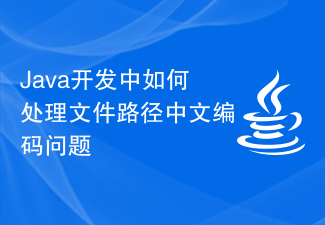 Java开发中如何处理文件路径中文编码问题Jun 29, 2023 pm 05:11 PM
Java开发中如何处理文件路径中文编码问题Jun 29, 2023 pm 05:11 PM在Java开发中处理文件路径中的中文编码问题是一个常见的挑战,特别是在涉及文件上传、下载和处理等操作时。由于中文字符在不同的编码方式下可能会有不同的表现形式,如果不正确处理,可能会出现乱码或路径无法识别的问题。本文将探讨如何正确处理Java开发中的文件路径中文编码问题。首先,我们需要了解Java中的编码方式。Java内部使用Unicode字符集来表示字符。而
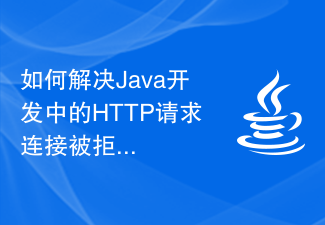 如何解决Java开发中的HTTP请求连接被拒绝问题Jun 29, 2023 pm 02:29 PM
如何解决Java开发中的HTTP请求连接被拒绝问题Jun 29, 2023 pm 02:29 PM如何解决Java开发中的HTTP请求连接被拒绝问题在进行Java开发中,经常会遇到HTTP请求连接被拒绝的问题。这种问题的出现可能是由于服务器端限制了访问权限,或是网络防火墙阻止了HTTP请求的访问。解决这个问题需要对代码和环境进行一些调整。本文将介绍几种常见的解决方法。检查网络连接和服务器状态首先,确认你的网络连接是正常的,可以尝试访问其他的网站或服务,看
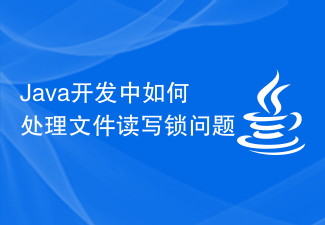 Java开发中如何处理文件读写锁问题Jun 29, 2023 am 09:55 AM
Java开发中如何处理文件读写锁问题Jun 29, 2023 am 09:55 AMJava是一种功能强大的编程语言,广泛应用于各种领域的开发中,特别是在后端开发中。在Java开发中,处理文件读写锁问题是一个常见的任务。本文将介绍如何在Java开发中处理文件读写锁问题。文件读写锁是为了解决多线程同时读写文件时可能出现的并发冲突问题。当多个线程同时读取一个文件时,不会产生冲突,因为读取是安全的。但是,当一个线程在写入文件时,其他线程可能正在读
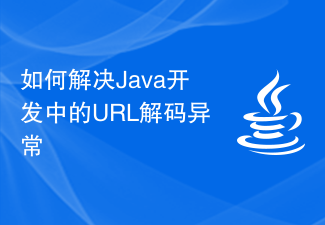 如何解决Java开发中的URL解码异常Jun 29, 2023 pm 02:07 PM
如何解决Java开发中的URL解码异常Jun 29, 2023 pm 02:07 PM如何解决Java开发中的URL解码异常在Java开发中,我们经常会遇到需要解码URL的情况。然而,由于不同的编码方式或者不规范的URL字符串,有时候会出现URL解码异常的情况。本文将介绍一些常见的URL解码异常以及对应的解决方法。一、URL解码异常的产生原因编码方式不匹配:URL中的特殊字符需要进行URL编码,即将其转换为以%开头的十六进制值。解码时,需要使
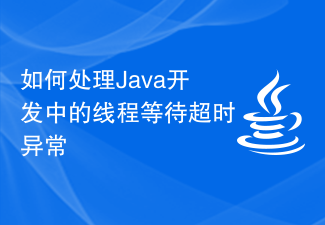 如何处理Java开发中的线程等待超时异常Jun 29, 2023 pm 06:18 PM
如何处理Java开发中的线程等待超时异常Jun 29, 2023 pm 06:18 PM如何处理Java开发中的线程等待超时异常在Java开发中,我们经常会遇到一种情况:当一个线程等待其他线程完成某个任务时,如果等待的时间超过了我们设定的超时时间,我们需要对该异常情况进行处理。这是一个常见的问题,因为在实际应用中,我们无法保证其他线程能在我们设定的超时时间内完成任务。那么,如何处理这种线程等待超时异常呢?下面,我将为你介绍一种常见的处理方法。首
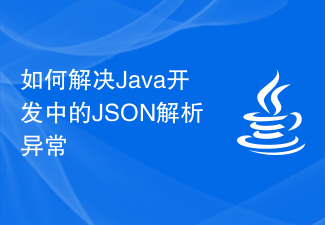 如何解决Java开发中的JSON解析异常Jun 29, 2023 pm 04:09 PM
如何解决Java开发中的JSON解析异常Jun 29, 2023 pm 04:09 PM如何解决Java开发中的JSON解析异常JSON(JavaScriptObjectNotation)是一种轻量级的数据交换格式,由于其易读性、易于解析和生成等特点,被广泛应用于网络数据传输、前后端交互等场景。在Java开发中,使用JSON进行数据的序列化和反序列化是非常常见的操作。然而,由于数据的结构和格式多种多样,JSON解析异常在Java开发中时常出
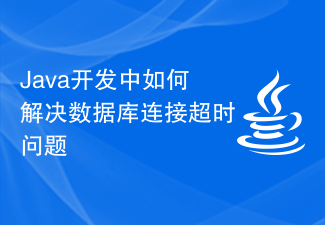 Java开发中如何解决数据库连接超时问题Jun 29, 2023 am 09:40 AM
Java开发中如何解决数据库连接超时问题Jun 29, 2023 am 09:40 AMJava开发中如何解决数据库连接超时问题简介:在Java开发中,处理数据库是非常常见的任务之一。尤其是在Web应用程序或后端服务中,与数据库的连接经常需要进行长时间的操作。然而,随着数据库的规模不断增大和访问请求的增加,数据库连接超时问题也开始变得常见。本文将讨论在Java开发中如何解决数据库连接超时问题的方法和技巧。一、理解数据库连接超时问题在开始解决数据
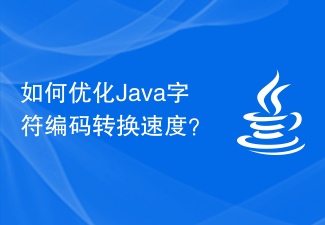 如何优化Java字符编码转换速度?Jun 30, 2023 am 11:25 AM
如何优化Java字符编码转换速度?Jun 30, 2023 am 11:25 AM标题:如何处理Java开发中的字符编码转换速度问题导语:随着互联网的发展,字符编码问题在计算机领域变得愈发重要。Java作为一种常用的编程语言,其字符编码转换的速度对于处理大量数据和提供高性能的应用程序至关重要。本文将介绍一些有效的方法和技巧,帮助开发者解决Java开发中的字符编码转换速度问题。一、了解字符编码在解决字符编码转换速度问题之前,我们需要了解一些


Hot AI Tools

Undresser.AI Undress
AI-powered app for creating realistic nude photos

AI Clothes Remover
Online AI tool for removing clothes from photos.

Undress AI Tool
Undress images for free

Clothoff.io
AI clothes remover

AI Hentai Generator
Generate AI Hentai for free.

Hot Article

Hot Tools

MinGW - Minimalist GNU for Windows
This project is in the process of being migrated to osdn.net/projects/mingw, you can continue to follow us there. MinGW: A native Windows port of the GNU Compiler Collection (GCC), freely distributable import libraries and header files for building native Windows applications; includes extensions to the MSVC runtime to support C99 functionality. All MinGW software can run on 64-bit Windows platforms.

DVWA
Damn Vulnerable Web App (DVWA) is a PHP/MySQL web application that is very vulnerable. Its main goals are to be an aid for security professionals to test their skills and tools in a legal environment, to help web developers better understand the process of securing web applications, and to help teachers/students teach/learn in a classroom environment Web application security. The goal of DVWA is to practice some of the most common web vulnerabilities through a simple and straightforward interface, with varying degrees of difficulty. Please note that this software

SecLists
SecLists is the ultimate security tester's companion. It is a collection of various types of lists that are frequently used during security assessments, all in one place. SecLists helps make security testing more efficient and productive by conveniently providing all the lists a security tester might need. List types include usernames, passwords, URLs, fuzzing payloads, sensitive data patterns, web shells, and more. The tester can simply pull this repository onto a new test machine and he will have access to every type of list he needs.

WebStorm Mac version
Useful JavaScript development tools

SublimeText3 Linux new version
SublimeText3 Linux latest version





